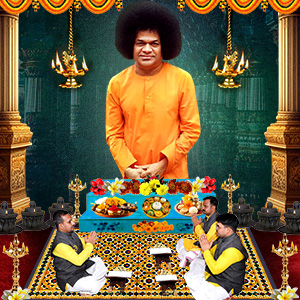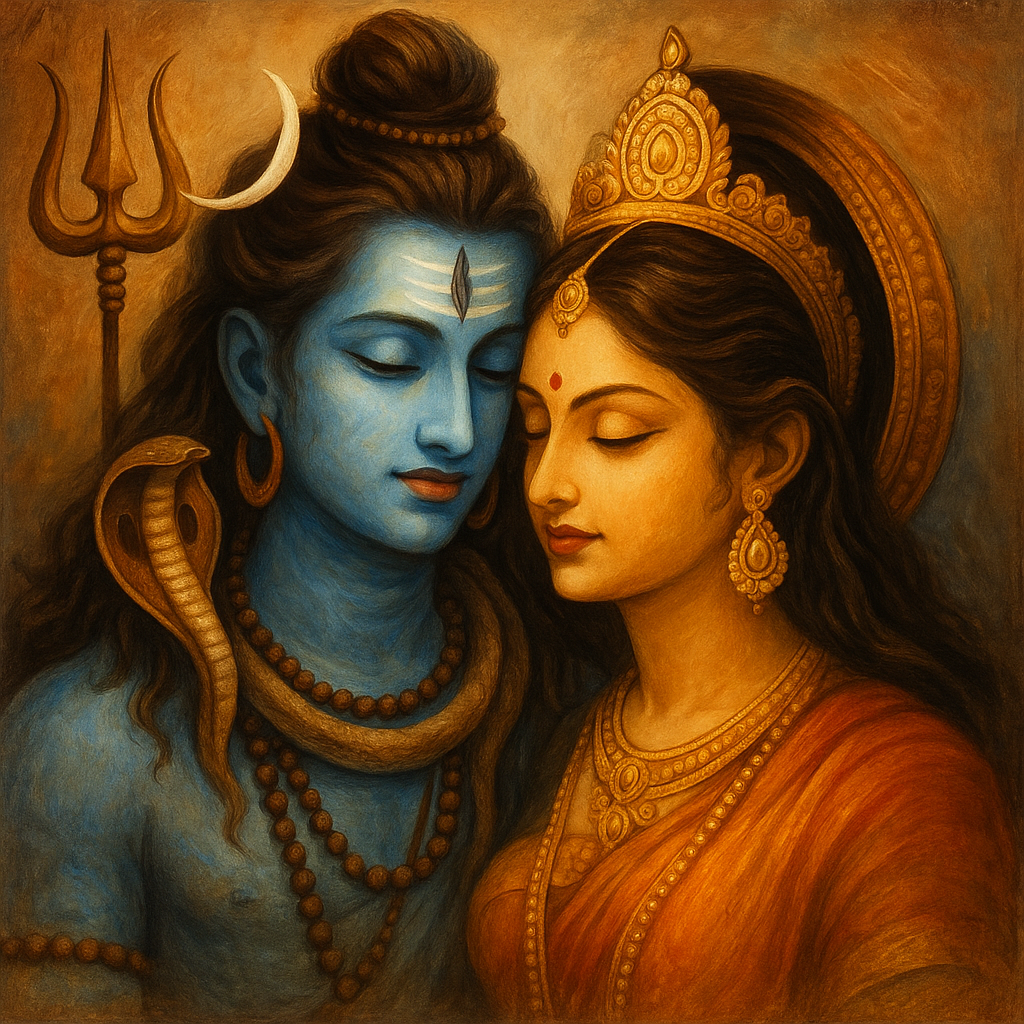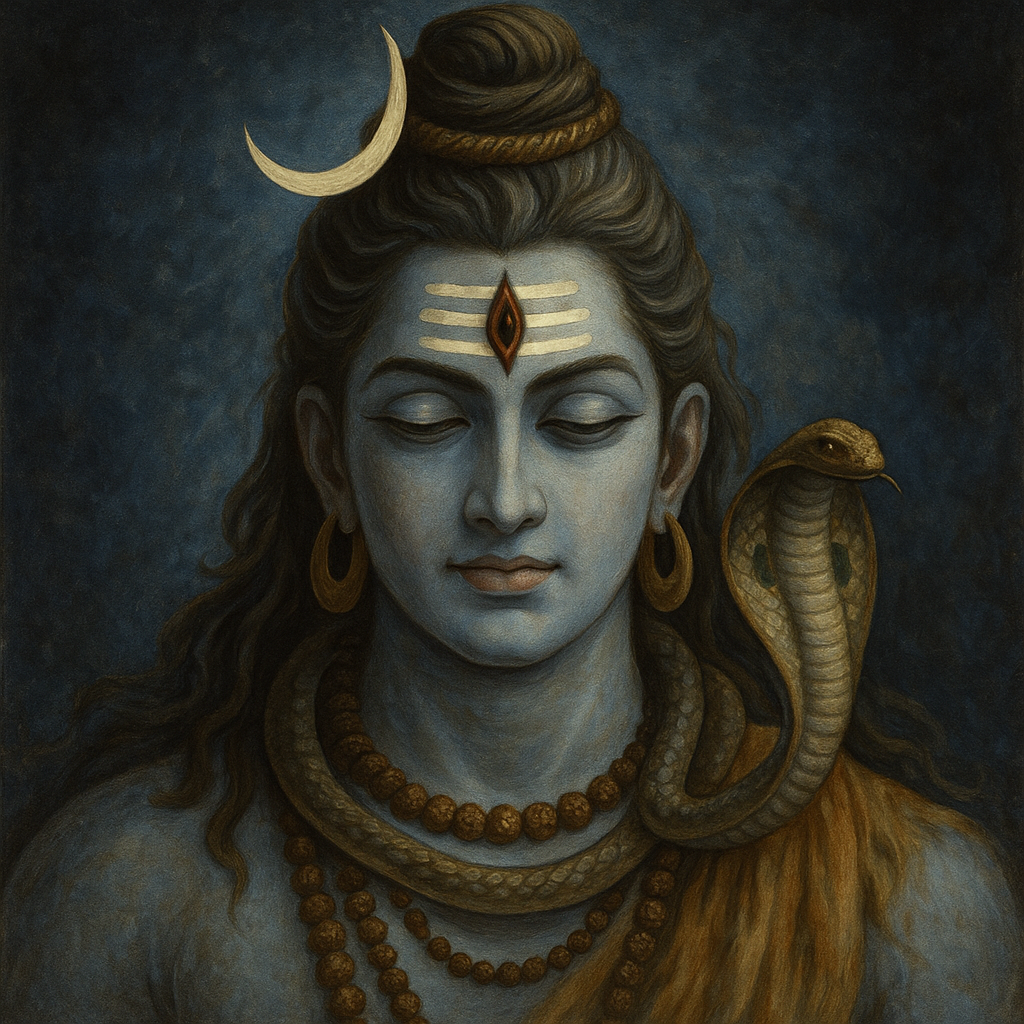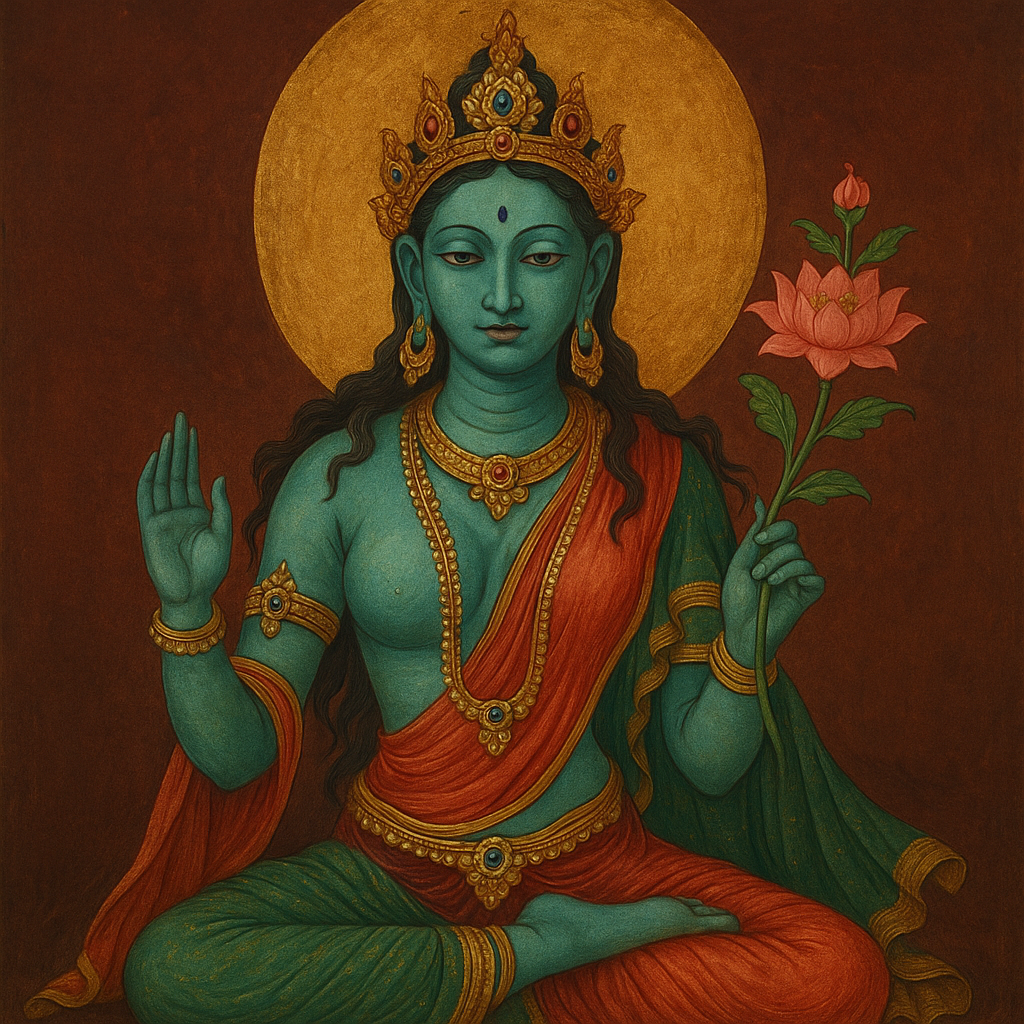Bhagwan Chitragupta is the divine record keeper and judge in Hindu tradition, entrusted with the meticulous task of documenting every action of every human being. Created directly from the mind and soul of Bhagwan Brahma after deep meditation, Chitragupta stands as the seventeenth Manasputra of Brahma and is recognized as the patron deity of the Kayastha community. He sits beside Yama, the God of Death, maintaining accurate records that determine whether a soul attains heaven or faces punishment based on its karma. His sharp intellect, administrative expertise, and unwavering commitment to justice make him the ultimate symbol of accountability and dharma. Temples and festivals across India honor his legacy, and devotees seek his blessings for wisdom, prosperity, and fair judgment.
Who is Bhagwan Chitragupta?
Bhagwan Chitragupta occupies a unique position in the Hindu pantheon as the divine registrar and judge of human deeds. He is directly created by Bhagwan Brahma from his mind and soul, making him the seventeenth Manasputra of Brahma. Chitragupta holds the critical responsibility of recording every action of every individual, maintaining meticulous records that are used to determine the fate of souls after death. He serves alongside Yama, the God of Death, and provides the documentation that guides the judgment of souls, ensuring that justice is delivered based on karma. Chitragupta is recognized as the progenitor of the Kayastha community, and his lineage is connected to Brahma as his creator and to Yama as his associate in the cosmic administration of justice. His marriages to Iravati, Yama’s daughter, and Nandini, daughter of Sraddhadeva Manu, further establish his connections within the divine family network.
Chitragupta is commonly depicted with a pen and inkpot, symbolizing his role as the divine scribe. He is often shown holding a notebook or scroll, representing his duty to document human actions. His vehicle is the horse, signifying speed and vigilance in carrying out his responsibilities. The sword he carries at his waist highlights his authority and readiness to enforce justice. These symbols collectively emphasize his attributes of wisdom, accountability, and moral integrity.
Significance of Bhagwan Chitragupta
Bhagwan Chitragupta holds deep philosophical and spiritual significance as the divine keeper of karmic records. He embodies the principle that every action has consequences and that each individual is accountable for their deeds. By maintaining meticulous records of human actions, Chitragupta ensures the fair dispensation of justice after death, guiding souls toward heaven or hell based on the balance of their karma. His presence reminds devotees of the importance of living with integrity, truth, and self-discipline. Worship of Chitragupta helps to cleanse negative karma, inspire righteous conduct, and promote inner redemption. Engaging in his worship encourages self-reflection, purification of the mind, and a conscious effort to maintain good karma.
Chitragupta is especially revered in South India and among the Kayastha community. The festival of Chitra Pournami, celebrated on the full moon day of the Chithirai month, is dedicated to him. On this day, devotees perform special prayers, fast, bathe in holy rivers, and distribute food and clothing to the poor as acts of atonement and to earn his blessings. The ancient Chitragupta temple in Kanchipuram and the pilgrimage to the Anamala Hills are focal points for worship during this festival. Rituals such as offering Navadhaniyam, lighting incense, and performing Mangala Aarti are central to the celebrations. Chitra Pournami is regarded as an auspicious opportunity to reduce negative karma, receive divine blessings, and clear the path for spiritual growth and enlightenment.
Iconography & Symbolism
Bhagwan Chitragupta is depicted as a dignified figure holding a pen and paper, symbolizing his role as the meticulous recorder of human deeds. In some traditions, he appears with a nail and palm leaf, reflecting ancient methods of documentation. His sharp gaze and composed demeanor represent vigilance and impartiality. He is often shown with a sword at his waist, signifying his authority to enforce justice. The horse is his chosen vehicle, embodying speed and alertness in carrying out his duties.
Art, sculptures, and temple depictions of Chitragupta emphasize his identity as the divine bookkeeper. Temples, especially in regions like Kanchipuram, present him seated with writing instruments, scrolls, or palm leaves, reinforcing his association with wisdom, record-keeping, and justice. Shrines dedicated to him, such as the one in Kayatha, Ujjain, often display him surrounded by symbols of knowledge and administration, highlighting his revered status among devotees.
Color symbolism for Chitragupta typically includes white or light hues, representing purity, clarity, and fairness in judgment. His posture is upright and attentive, often seated or standing with writing materials in hand, ready to record every action. The mudras associated with him are those of teaching and blessing, underscoring his role as a guide and arbiter of karma, ensuring that every soul receives just rewards or consequences for their deeds.
Origin of Bhagwan Chitragupta
Bhagwan Chitragupta’s mythological origin is rooted in his creation by Bhagwan Brahma, who formed him directly from his own mind and soul after an extended period of meditation. Brahma assigned Chitragupta the unique responsibility of recording the deeds of all living beings, granting him the dual duties of a Brahmin’s wisdom and a Kshatriya’s discipline. This role became essential when Yama, the God of Death, found the task of maintaining records overwhelming due to the sheer number of souls. Brahma, recognizing the need for an able assistant, temporarily delegated the universe’s affairs to Surya and meditated for eleven thousand years, resulting in Chitragupta’s manifestation. Chitragupta emerged holding a pen and paper, ready to serve as the divine bookkeeper.
Scriptural references to Chitragupta appear in several Hindu texts. The Padma Purana describes his appointment beside Yama to chronicle the good and evil actions of all beings, highlighting his supernatural wisdom and his participation in sacrificial rituals. The Garuda Purana depicts Chitragupta presiding over his own court in Yamaloka, where he dispenses justice based on the precise records he keeps. The Mahabharata emphasizes his teachings on noble conduct, charity, and yagna, reinforcing the idea that every soul is rewarded or punished according to its actions. Another legend, popular in South India, recounts that Goddess Parvati requested Brahma to create an entity to account for all beings’ deeds. Brahma drew Chitragupta’s image on wood and brought it to life, where he is depicted with a nail and palm leaf for record-keeping.
Chitragupta’s birth is also celebrated in human form at Kayatha in Ujjain, an ancient site with a shrine dedicated to him. His lineage includes marriages to Dakshina Nandini and Erawati Shobawai, and his descendants are recognized as the progenitors of the Kayastha community. These stories and scriptural connections establish Chitragupta as the divine protector of dharma and the impartial judge of karma.
Legends and Stories
One popular legend describes how Yama, the God of Death, struggled to keep up with the immense task of recording the deeds of all souls. The chaos and errors that resulted prompted Yama to request Bhagwan Brahma for a capable assistant. Brahma, understanding the gravity of the situation, temporarily entrusted the universe’s affairs to Surya and entered deep meditation for eleven thousand years. From this intense penance, Chitragupta emerged from Brahma’s mind and body, equipped with a pen and paper, ready to serve as the divine bookkeeper and restore order.
Another well-known story, especially in South India, involves Goddess Parvati. She asked Brahma to create someone who could maintain an account of every being’s actions. Brahma responded by drawing Chitragupta’s image on a wooden block and bringing it to life. In this version, Chitragupta is depicted with a nail and palm leaf, tools used for ancient record keeping, highlighting his role as the meticulous recorder of karma.
Chitragupta’s birth in human form at Kayatha in Ujjain is also celebrated. This site, with a shrine dedicated to him, is recognized as an ancient center of worship and where he manifested on earth. These stories collectively establish Chitragupta as the vigilant protector of dharma and the impartial judge of all souls, ensuring that every action is accounted for and justice is served accordingly.
Spiritual Lessons from Bhagwan Chitragupta
The tales of Bhagwan Chitragupta impart clear moral and spiritual lessons centered on the principles of karma, accountability, and righteous living. His role as the divine bookkeeper underscores that every action, whether good or bad, is meticulously recorded and will have direct consequences. This teaches that individuals must live with integrity, truthfulness, and self-discipline, as nothing escapes the cosmic order of justice.
These stories emphasize that rewards or punishments are determined solely by one’s deeds, reinforcing the importance of ethical conduct and charity. The presence of Chitragupta in the afterlife as the arbiter of justice serves as a reminder that no act goes unnoticed, and that spiritual growth and liberation are attainable only through sincere effort to maintain good karma. The spiritual lesson is to continuously reflect on one’s actions, seek forgiveness for past misdeeds, and strive for self-improvement, knowing that justice is inevitable and impartial. Worship of Chitragupta inspires wisdom, knowledge, and a commitment to living a life aligned with dharma.
Puja Vidhi at Home
Required Materials
- Idol or image of Bhagwan Chitragupta
- Plate for placement
- Gangajal or pure water
- Honey
- Gomutra
- Sandalwood paste
- Kumkum, haldi, abir, gulal
- Rice grains
- Incense sticks
- Diya or oil lamp
- Camphor
- Fresh flowers
- Dry fruits
- Betel nuts, cardamom, clove
- Holy thread
- Soft cloth for cleaning
- Sweets, fruits, altar cloth (optional)
Step-by-Step Home or Festival Puja Guide
- Bathe and wear clean clothes
- Sit calmly in front of the altar
- Place the idol or image on a plate
- Sprinkle Gangajal or pure water on the idol while chanting
- Offer gomutra and honey, then rinse with Gangajal
- Wipe the idol with a soft cloth and set it on the altar
- Apply tilak using haldi, kumkum, abir, gulal, sandal paste, and rice grains
- Light incense and diya
- Offer fragances or perfume
- Present dry fruits, candy sugar, betel nuts, cardamom, and clove
- Tie a holy thread around your wrist
- Light the oil lamp and prepare for aarti
Chanting and Aarti Process
- Recite Bhagwan Chitragupta’s mantra or stotra with devotion
- Use a rudraksha japa mala for repeated chanting if desired
- Perform aarti by waving the lit diya or camphor in a circular motion before the deity while singing the aarti
- Distribute prasad to family and friends after aarti
Mantras Dedicated to Bhagwan Chitragupta
Om Chitraguptaya Namah
Meaning:
Salutations to Bhagwan Chitragupta.
Benefits:
Chanting this mantra invokes the blessings of Bhagwan Chitragupta for wisdom, knowledge, and clarity. It helps devotees gain an analytical mind, remove obstacles related to education or administration, and promote peace and prosperity in life. Regular recitation supports those in accounting or managerial roles and helps eliminate illiteracy and poverty.
Writing “ॐ चित्रगुप्ताय नमः” Eleven Times
Sanskrit Transliteration:
Om Chitraguptaya Namah
Meaning:
Repeatedly honoring Bhagwan Chitragupta.
Benefits:
Writing this mantra eleven times during the puja ritual strengthen focus, attract the deity’s blessings, and help devotees atone for past misdeeds. This practice purify one’s karma and bring clarity, discipline, and justice into daily life.
Benefits of Worshipping Bhagwan Chitragupta
Worship of Bhagwan Chitragupta brings spiritual, mental, and material advantages that touch every aspect of a devotee’s life. Spiritually, it instills a deep sense of accountability and ethical living, reminding individuals that every action is recorded and will have consequences. This awareness encourages self-reflection, repentance, and a commitment to righteous conduct, helping devotees purify their karma and progress on the path of spiritual growth. Worship also promotes inner peace, clarity, and a sense of justice, aligning the mind and soul with higher principles.
Mentally, devotion to Bhagwan Chitragupta enhances wisdom, knowledge, and analytical ability. It sharpens judgment, improves decision-making, and fosters self-awareness. The practice of chanting his mantras or performing his puja helps devotees stay focused, disciplined, and mindful in daily life. This mental clarity supports better choices, reduces obstacles, and encourages a balanced, harmonious mindset.
Materially, Bhagwan Chitragupta’s blessings are known to remove illiteracy and poverty, attract prosperity, and support professional success, especially in fields related to administration, education, and finance. His worship helps devotees overcome financial challenges, secure stable incomes, and attain overall well-being. Businesspeople and professionals often seek his favor for growth, fair dealings, and the removal of hurdles in their ventures.
Most important benefits:
- Blesses with wisdom, knowledge, and an analytical mind
- Promotes ethical conduct, accountability, and righteous living
- Purifies karma and helps remove negative influences from past actions
- Brings peace, prosperity, and financial stability
- Enhances decision-making and mental clarity
- Removes obstacles in education, career, and business
- Inspires self-reflection, spiritual growth, and inner peace
Temples Dedicated to Bhagwan Chitragupta
Temples dedicated to Bhagwan Chitragupta are rare and hold significant cultural and spiritual importance, especially among the Kayastha community and devotees seeking blessings for wisdom, justice, and prosperity. These temples often serve as centers for community gatherings, rituals, and festivals, highlighting the deity’s role as the divine accountant who records human deeds and assists Yama in dispensing justice. The architecture of these temples typically features traditional elements like towering gopurams, intricate carvings, and sanctums where Chitragupta is depicted with a pen and script, symbolizing his meticulous record keeping. Many of these temples have historical roots tracing back to ancient dynasties, and their inscriptions and artifacts provide insights into the evolution of worship practices and the deity’s significance across generations. Pilgrimages to these temples, especially during major festivals, draw devotees from across India, reinforcing their status as important spiritual destinations.
The Chitragupta Temple in Kanchipuram, Tamil Nadu, stands as one of the oldest and most prominent temples dedicated to the deity. Built during the 9th century by the Chola dynasty, it features classic Dravidian architecture with a three tiered rajagopuram and a central shrine where Chitragupta is depicted seated with a pen and scripts. This temple is unique for its historical inscriptions and the discovery of ancient metal idols of Chitragupta and his consort Karnikambal. The temple is a focal point for the celebration of Chitra Pournami, a major festival in April, when devotees gather to seek blessings and participate in special rituals. Regular worship practices include fasting and the offering of food without salt, especially by women seeking the deity’s favor.
Another major pilgrimage site is the Shri Chitragupta Prakatya Tirth in Ujjain, Madhya Pradesh, regarded as the place where Chitragupta have manifested. This temple, set in a serene natural environment, is a revered destination for the Kayastha community and is mentioned in ancient texts like the Padma Purana and Iskand Purana. The temple complex in Ujjain is also notable for housing a rare temple of Bhagwan Brahma on its first floor, adding to its uniqueness. The Chitragupta Devalayam in Falaknuma, Hyderabad, built in the 18th century by Kayasthas, is another important temple, reflecting the spread of Chitragupta worship beyond central and southern India.
Festivals such as Chitra Pournami are celebrated with great devotion at these temples, marked by special pujas, community feasts, and rituals aimed at seeking forgiveness and blessings for prosperity and righteous living. These temples not only serve as spiritual hubs but also as custodians of the rich heritage and traditions associated with Bhagwan Chitragupta, attracting pilgrims and devotees from India and abroad.
Presence in Other Traditions
Chitragupta’s influence outside Hinduism is limited but notable in Jainism, where Citraguptā is mentioned as one of the eight Dikkumārīs residing on the southern Rucaka mountains in the Rucakadvīpa continent. In this tradition, Citraguptā is a divine attendant who honors the Jinas and participates in rituals, symbolizing devotion and service. Jain doctrine centers on nonviolence and spiritual development, and the presence of Citraguptā among the Dikkumārīs highlights the broader Indian tradition of divine record keepers and cosmic order.
Direct references to Chitragupta in Buddhism or Southeast Asian religious traditions are minimal. However, the concept of a divine scribe or cosmic accountant resonates with the broader theme of karmic accountability found across Indian religions. The principle that every action is recorded and has consequences aligns with Buddhist and Jain philosophies, even if Chitragupta as a deity is not specifically worshipped in those traditions.
In comparative mythology, Chitragupta’s role as a divine recorder parallels figures such as Thoth in Egyptian mythology, who is the god of writing and knowledge and presides over scribes and scholars. Thoth is often depicted as a scribe for the gods, recording the outcomes of the judgment of souls, much like Chitragupta’s role alongside Yama. In Greek mythology, the relationship between Hades and his attendant Charos, who ferries souls and keeps records, echoes the partnership of Yama and Chitragupta. These similarities across cultures highlight a universal archetype of a divine scribe or judge who upholds moral order and ensures justice in the afterlife.
Rudra Centre Recommended Products
Click here to view the Rudraksha Kantha & Rudraksha Mala
Experience the transformative power of the Rudraksha Kantha & Rudraksha Mala, expertly crafted and consecrated to support your meditation, Japa, and spiritual growth. Each mala is strung according to Rudraksha Ratna Chakra Therapy, ensuring a potent energy circuit that balances chakras, protects against negativity, and enhances mental clarity. Sourced from authentic Nepal and Java varieties, these malas are revered for their ability to foster peace, emotional stability, and overall well-being, making them an essential tool for seekers and devotees on the path of self-realization.
Bhagwan Chitragupta: The Eternal Arbiter of Karma
Bhagwan Chitragupta stands as the vigilant guardian of justice and the divine scribe of destiny. His presence in the Hindu pantheon is a constant reminder that every thought, word, and action is accounted for, and that true liberation comes only through righteous living and self-accountability. Chitragupta’s unwavering commitment to dharma inspires individuals to reflect, seek inner clarity, and uphold ethical values in all aspects of life. By honoring him, devotees not only invoke wisdom and prosperity but also align themselves with the cosmic law of cause and effect, ensuring that their journey through life and beyond is guided by truth, fairness, and spiritual growth.





Ashwini
|June 26, 2024
Why does chitragupta comes in dream